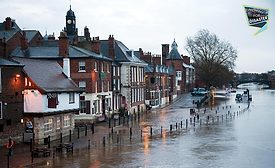Special Sections
Flooding & Wind Caused Most Destruction in 2016
Breaking down CoreLogic’s annual summary of natural hazards.
April 12, 2017
R&R Q&A: Lessons from Hurricane Matthew
Sometimes you chase, and sometimes the storm comes to you.
April 10, 2017
Special Section: Prepping for Disaster
6 Simple Ways to Get More Leads During Severe Weather Season
Read MoreSpecial Section: Prepping for Disaster
New Industry Council Brings Fresh Approach to Disaster Response
Read MoreGet our new eMagazine delivered to your inbox every month.
Stay in the know on the latest disaster restoration and remediation trends.
SUBSCRIBE TODAY!Copyright ©2022. All Rights Reserved BNP Media.
Design, CMS, Hosting & Web Development :: ePublishing











